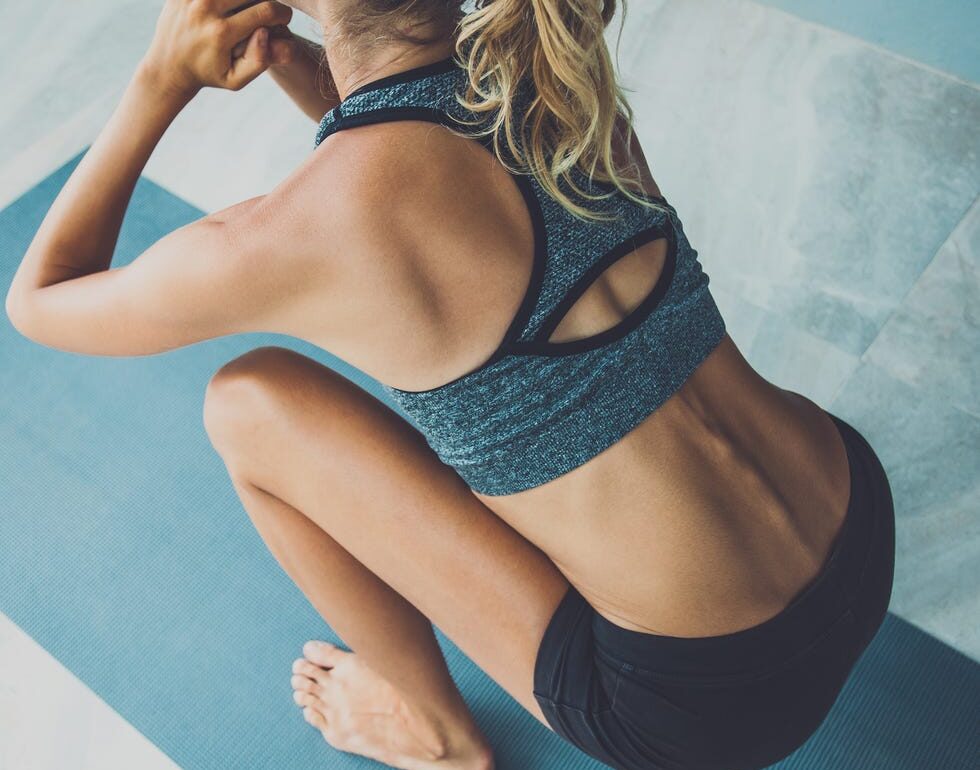Narrow Squat
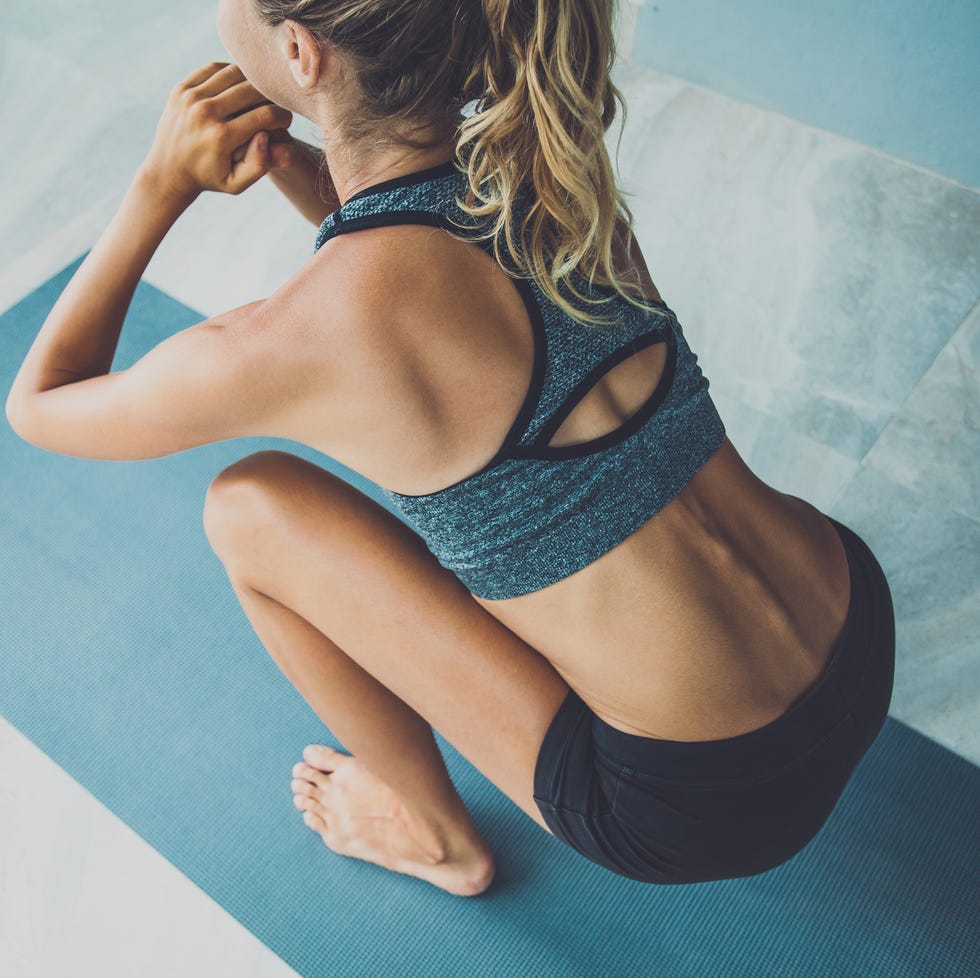
Peterson says that playing with foot position can target different aspects of the glute muscles. A resistance band positioned just above your knees can also be useful.
How to: Start standing tall with your feet together. Inhale as you squat straight down, shooting your hips back and keeping your weight in your heels. Remember to keep your core engaged and chest upright throughout the movement. Exhale and squeeze your glutes as you come back up to standing position.
Regular Squat

Before adding weight, focus on form and core engagement in the regular squat Peterson says. When you do add weight, consider holding two dumbbells at your side or holding a kettlebell with both hands by your chest.
How to: Start with your feet shoulder width apart and toes pointing forward. Inhale as you squat straight down, shooting your hips back and keeping your weight in your heels. Aim for lowering your booty down so that it is parallel with your knees, ensuring that your knees stay over your ankles and do not track over your toes. Exhale and squeeze your glutes as you come back up to standing position.
Advertisement – Continue Reading Below
Slight Turnout Squat
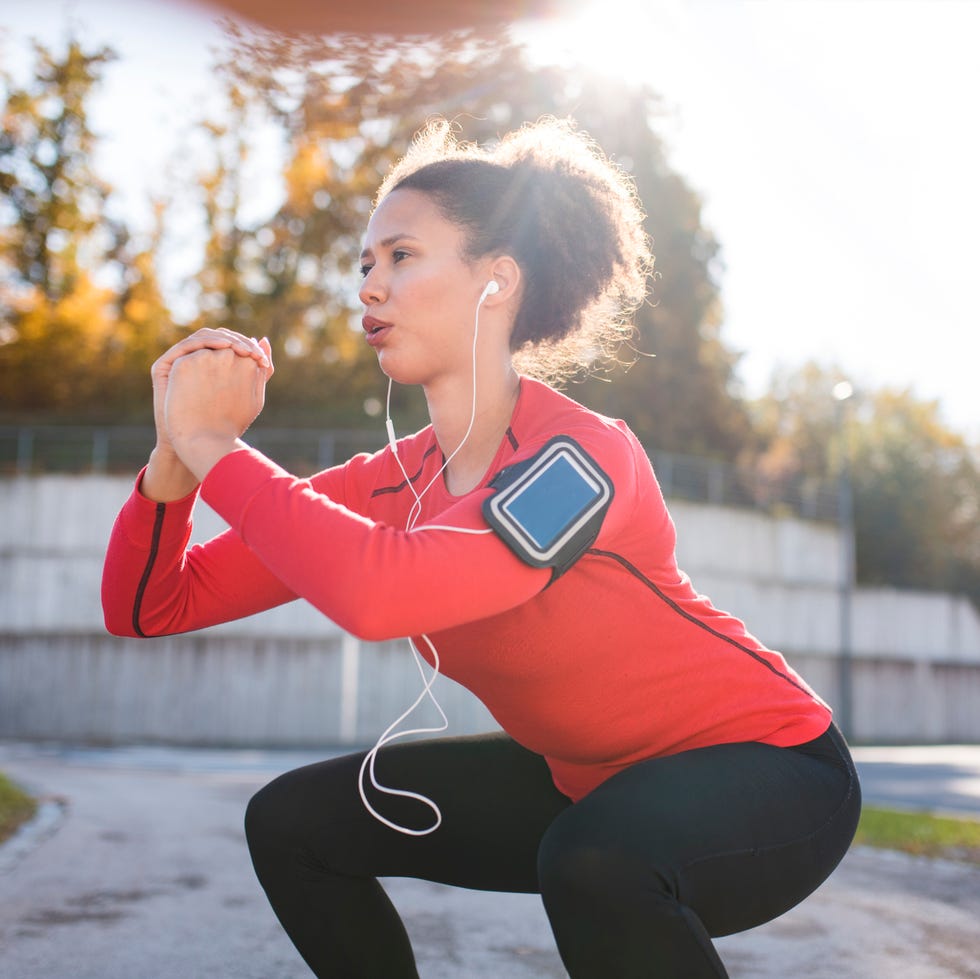
This variation in Peterson’s squat sequence is great for targeting those lesser-used muscles.
How to: Start with your feet a bit farther apart than regular squat stance and turn your toes out slightly. Inhale as you squat straight down, shooting your hips back and keeping your weight in your heels. Aim for lowering your booty down so that it is parallel with your knees, ensuring that your knees stay over your ankles and do not track over your toes. Exhale and squeeze your glutes as you come back up to standing position.
Plie Squat
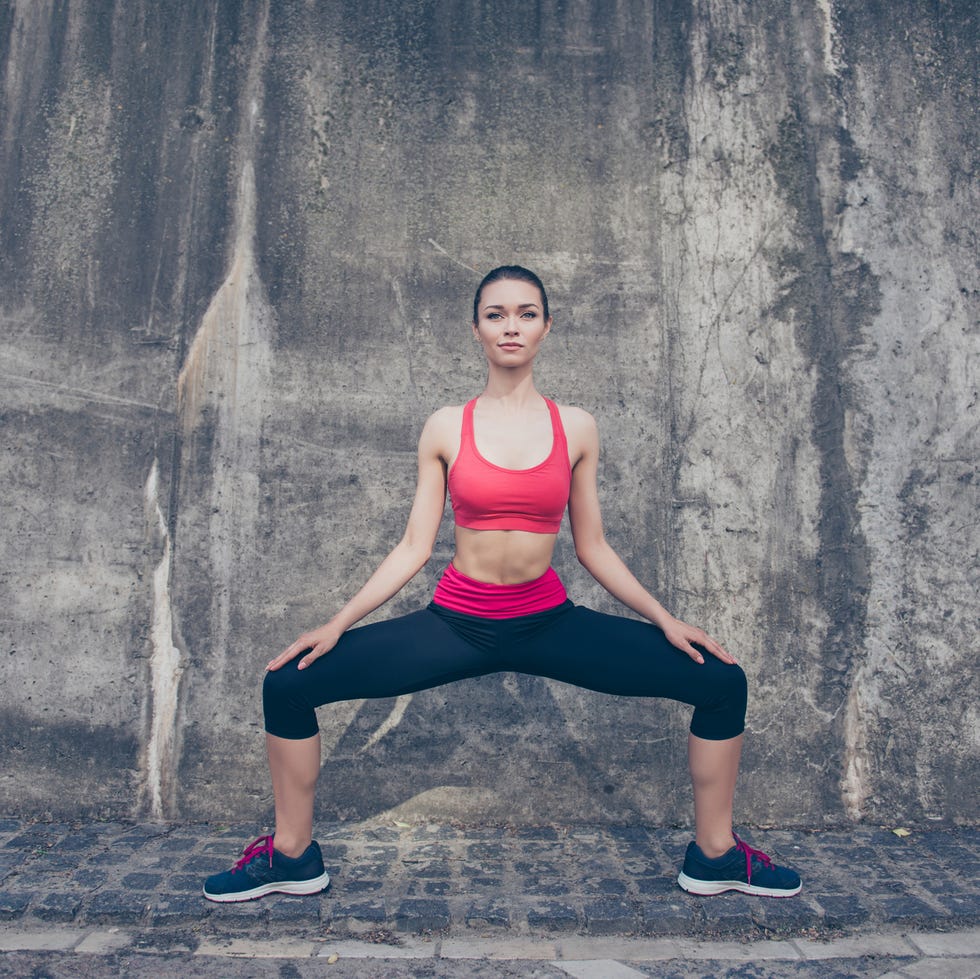
The last movement in this squat sequence can help really target the inner thighs and glutes, making plie squats a great butt exercise for women.
How to: Start standing with your feet wider than your shoulders and toes pointed out at a 45 degree angle. Keep your chest up and core engaged as you inhale and bend your knees to lower down, focusing on pushing your knees outward. Exhale and engage your glutes as you come back up to standing position.
Advertisement – Continue Reading Below
Non-Dominant Side Single-Leg Glute Bridge

Squats are done, now it’s time to hit the floor for some glute bridges. By transitioning from standing squats straight into floor work, Peterson says you’ll be able to keep your heart rate up and tax the muscles. He advises to begin on your non-dominant side first since it’s often weaker (if you’re a righty, you’ll start with your left leg in the air and vice versa).
How to: Lay on your back with knees bent, feet flat on the floor and about shoulder width apart, and arms next to your sides. Engage your core, pull the belly button in to your spine and recruit your glutes as you lift your hips up until they have created a “bridge,” which is a flat surface from chest to knees. From this position, lift your non-dominant leg straight up into the air. Squeeze the glutes for a second before lowering back down.
Dominant Side Single Leg Glute Bridge
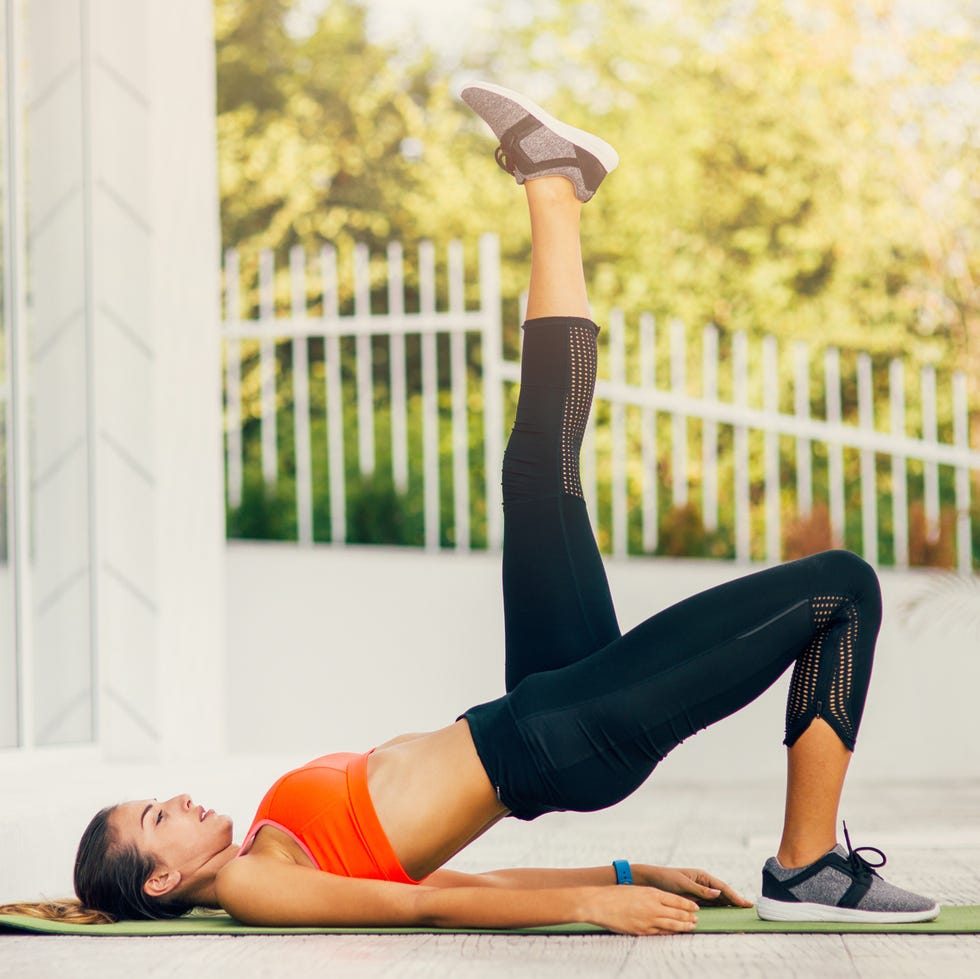
Next up, the same exercise but on the opposite leg. Don’t forget to breathe through the movement and engage your core too.
How to: Lay on your back with knees bent, feet flat on the floor and about shoulder width apart, and arms next to your sides. Engage your core, pull the belly button in to your spine and recruit your glutes as you lift your hips up until they have created a “bridge,” which is a flat surface from chest to knees. From this position, lift your dominant leg straight up into the air. Squeeze the glutes for a second before lowering back down.
Advertisement – Continue Reading Below
Narrow Double Leg Glute Bridge
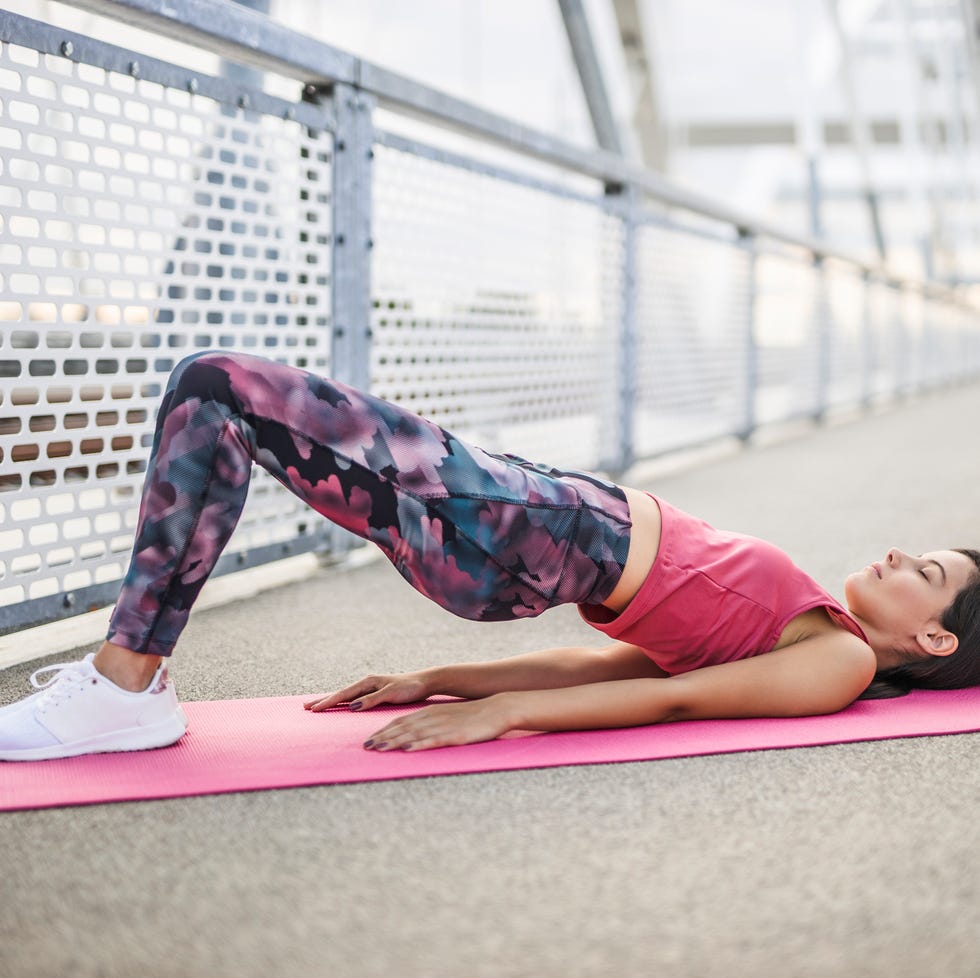
Even slightly changing the position of your legs can transform your butt workout. This narrow double leg glute bridge keeps both feet on the floor but requires strength and coordination.
How to: Lay on your back with knees bent, feet flat on the floor and arms next to your sides. Glue your legs and feet together for this glute bridge variation. Engage your core and glutes as you lift your hips up, pausing for a moment at the top and then slowly coming back down with control.
Wide Double Leg Glute Bridge
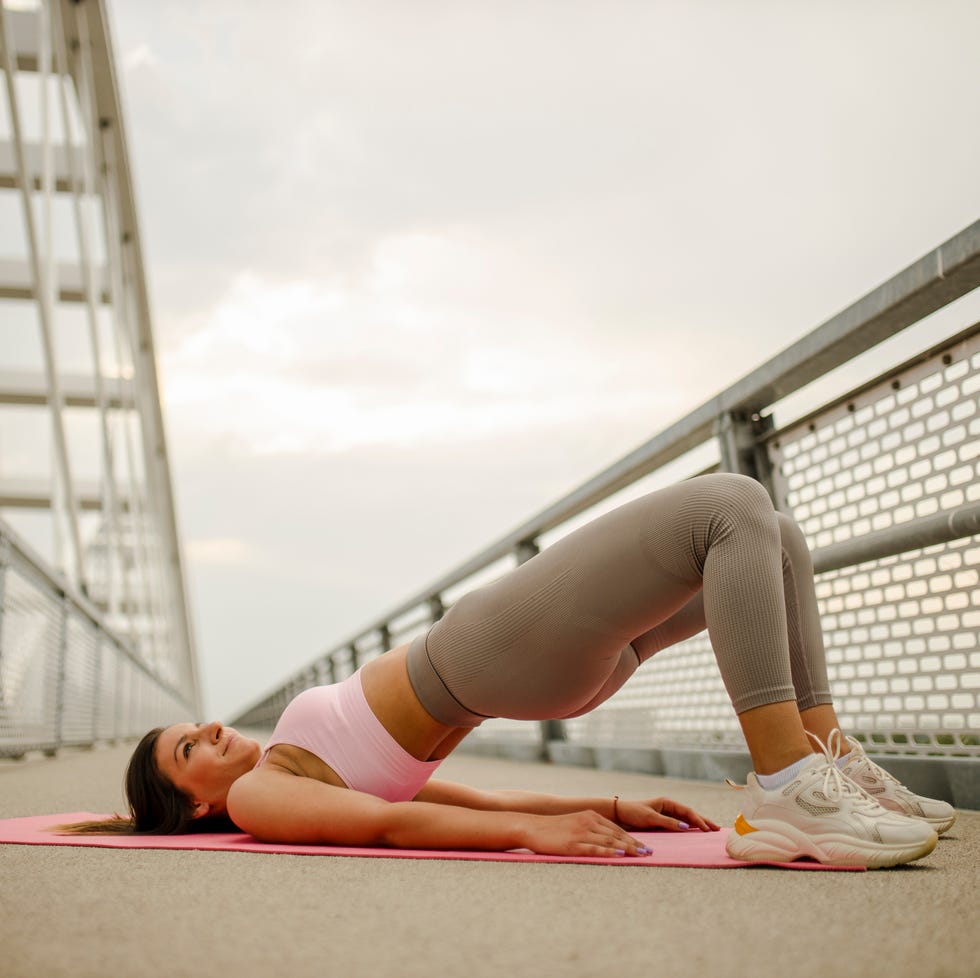
Once you master the movement, Peterson suggests adding weight on your hip bones or bikini line area for women.
How to: Lay on your back with knees bent, feet flat on the floor and arms next to your sides. Bring your feet wider than shoulder width apart for this glute bridge variation, and ensure you are pushing your knees outward and not letting them cave in. Engage your core and glutes as you lift your hips up, pausing for a moment at the top and then slowly coming back down with control.
Advertisement – Continue Reading Below
Alternating Front Lunges
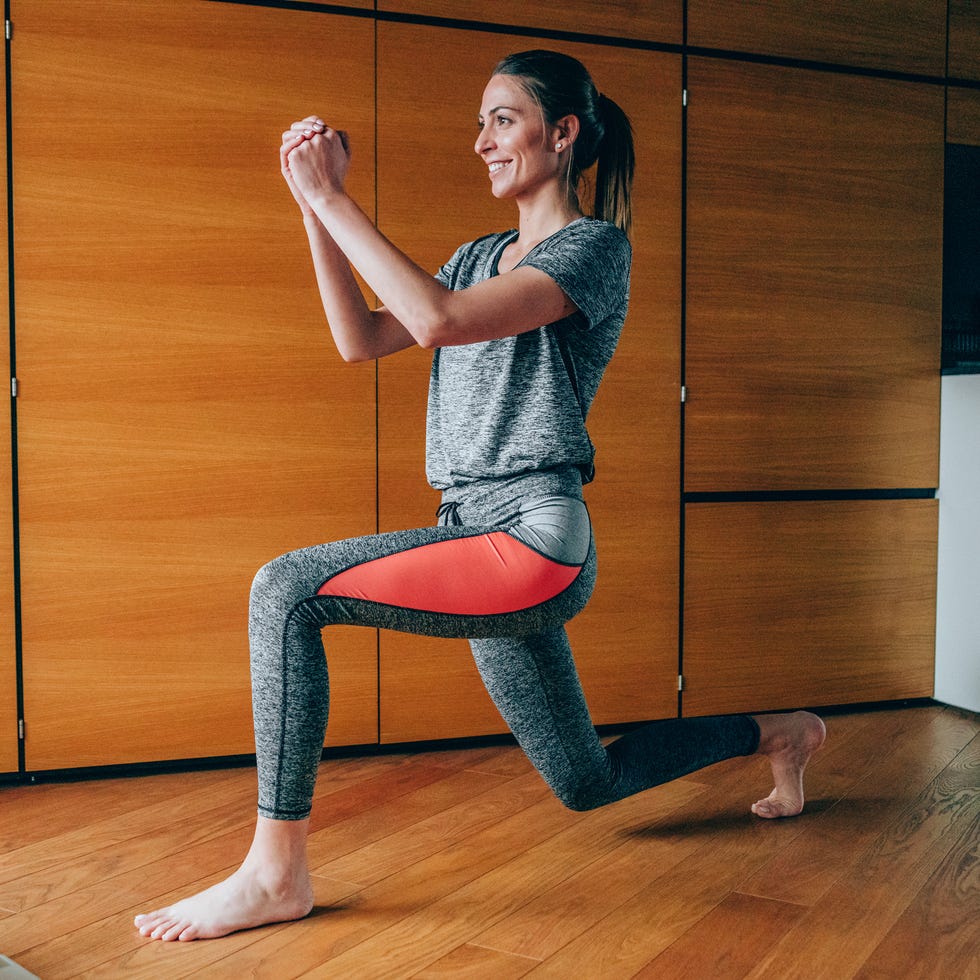
This lunge sequence is great for targeting the glutes and working on balance too. Pasternak says that he and his family do walking lunges around the block of their home.
How to: Start standing tall with feet hip width apart, core engaged and chest lifted. Step forward with your right foot and bend both knees, lowering until your knees are both bent at a 90-degree angle. Push off from your front leg to return to the starting position. Repeat the movement but this time on the other side by stepping the left foot forward. Continue alternating for the full 30 seconds.
Alternating Side Lunges
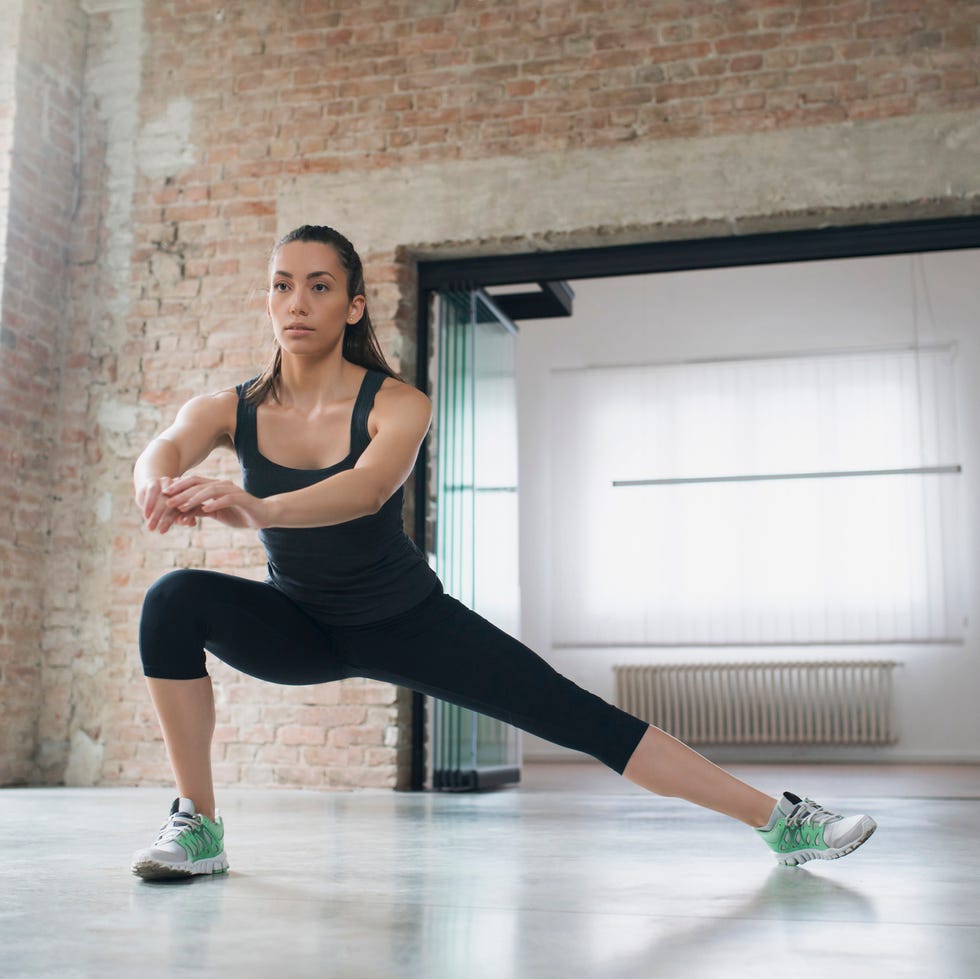
We’re so used to moving forwards and backwards, but side to side movement is crucial for building strong and sculpted glutes. This lunge variation helps to target the sides of the glutes as well as the inner thighs.
How to: Stand with feet hip-distance apart. Keep your chest up and step your right foot out as wide as possible. Push the booty back and sink down into a squat on one side. Engage your glutes to come back up into standing position. Repeat on the opposite side and continue alternating for the full 30 seconds.
Advertisement – Continue Reading Below
Alternating Reverse Lunges
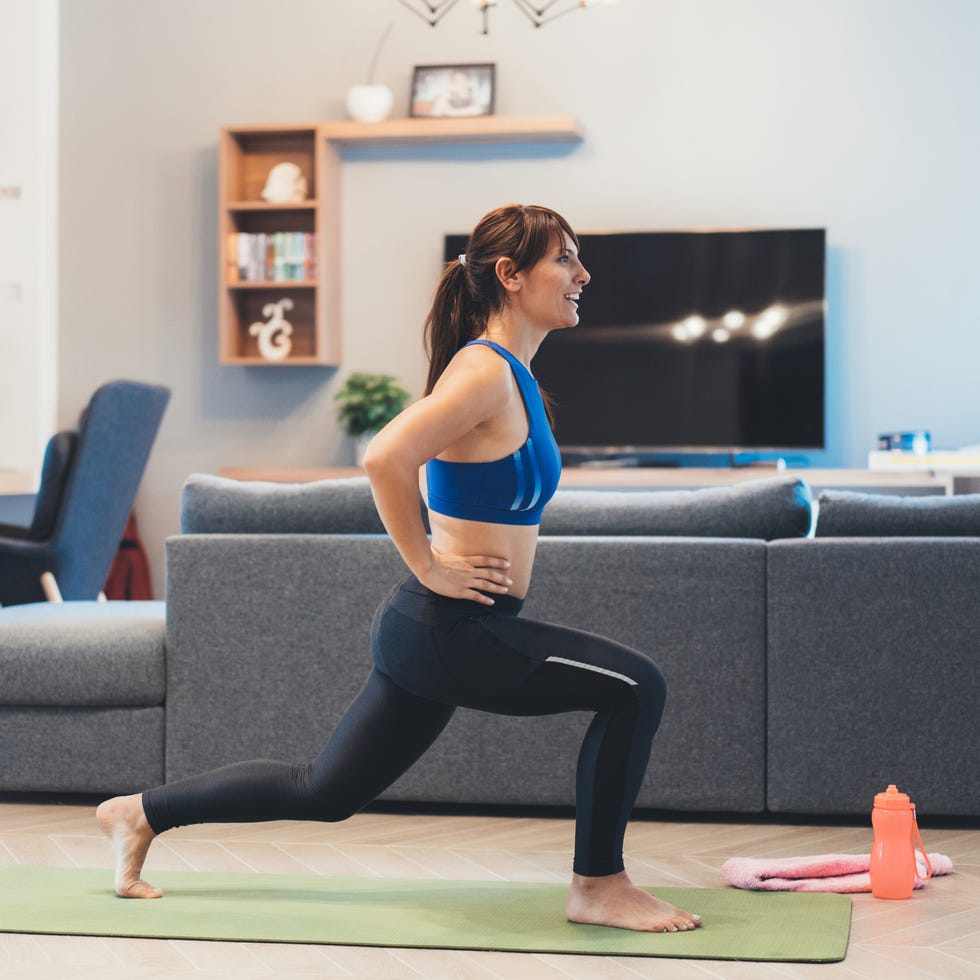
The last move in this lunge sequence requires coordination, balance and strength. Once you master the movement, try holding dumbbells on either side or a kettlebell near your chest.
How to: Start standing tall with feet hip width apart, core engaged and chest lifted. Step backward with your right foot and bend both knees, lowering until your knees are both bent at a 90-degree angle. Push off from your back leg to return to the starting position. Repeat the movement but this time on the other side by stepping the left foot backward. Continue alternating for the full 30 seconds.
Bent Knee Glute Kickback
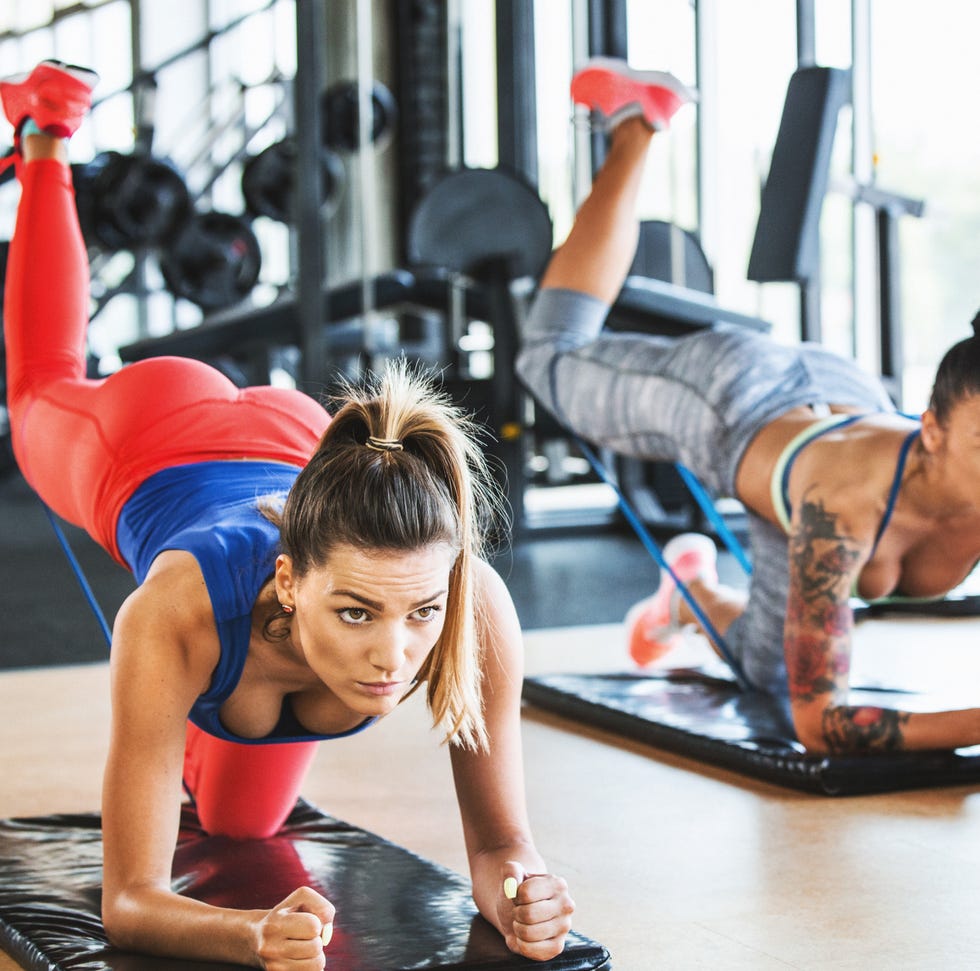
This classic toning move is perfect for sculpting your legs and booty. Peterson says adding resistance bands placed on your thighs just above your knees in this move can make it more effective. Instead of flying through the movements, he recommends slowing down and moving with a purpose.
How to: Start on a non-slip rug or padded mat with your forearms and knees on the floor. Core is engaged and lower abs are drawn in. Keep your left leg bent and foot flexed as you kick your left foot to the ceiling. Lower back down with control. Finish this movement on the right side first for two rounds before repeating on the left side.
Advertisement – Continue Reading Below
Clamshells
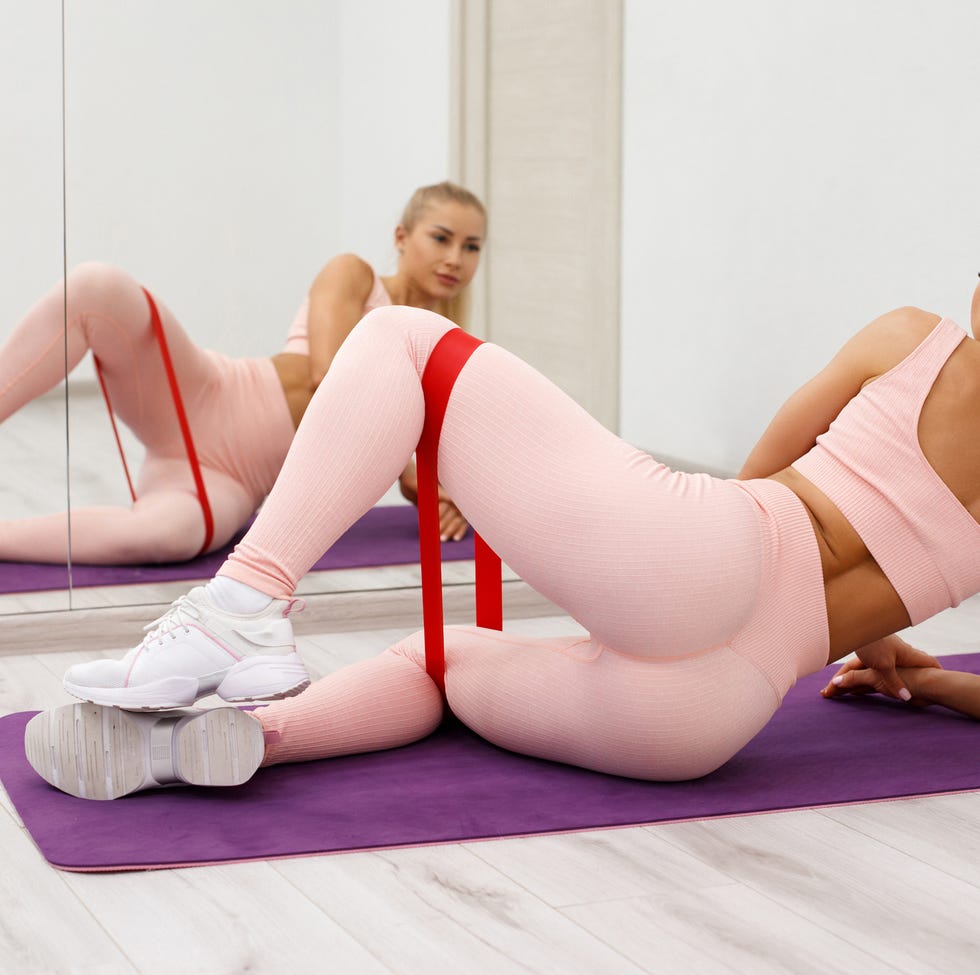
Pasternak favors glute training because it ensures that the surrounding tissues aren’t overly restrictive and tight. He loves clamshells as a way to target the gluteus medius.
How to: Lay down on your side, and make sure your head, hips, and heels are in one long plane. Place your fingertips on the floor in front of you to stabilize the body, and bend your knees in front of you. Keep your feet glued together as you float your top knee up to your hip, then lower back down. Finish this movement on the right side first for two rounds before repeating on the left side.
Why trust Good Housekeeping?

Stefani Sassos has been working in the fitness industry for over a decade, specializing in indoor cycling and strength training. As a NASM-certified personal trainer and women’s fitness specialist, Sassos uses her exercise science knowledge and expertise to create informed fitness content for the Good Housekeeping Institute. Now a mother of two young children, she is especially passionate about teaching women the importance of exercises that strengthen and engage both the gluteal and pelvic floor muscles.
Stefani (she/her) is a registered dietitian, a NASM-certified personal trainer and the director of the Good Housekeeping Institute Nutrition Lab, where she handles all nutrition-related content, testing and evaluation. She holds a bachelor’s degree in nutritional sciences from Pennsylvania State University and a master’s degree in clinical nutrition from NYU. She is also Good Housekeeping’s on-staff fitness and exercise expert. Stefani is dedicated to providing readers with evidence-based content to encourage informed food choices and healthy living. She is an avid CrossFitter and a passionate home cook who loves spending time with her big fit Greek family.
Watch Next
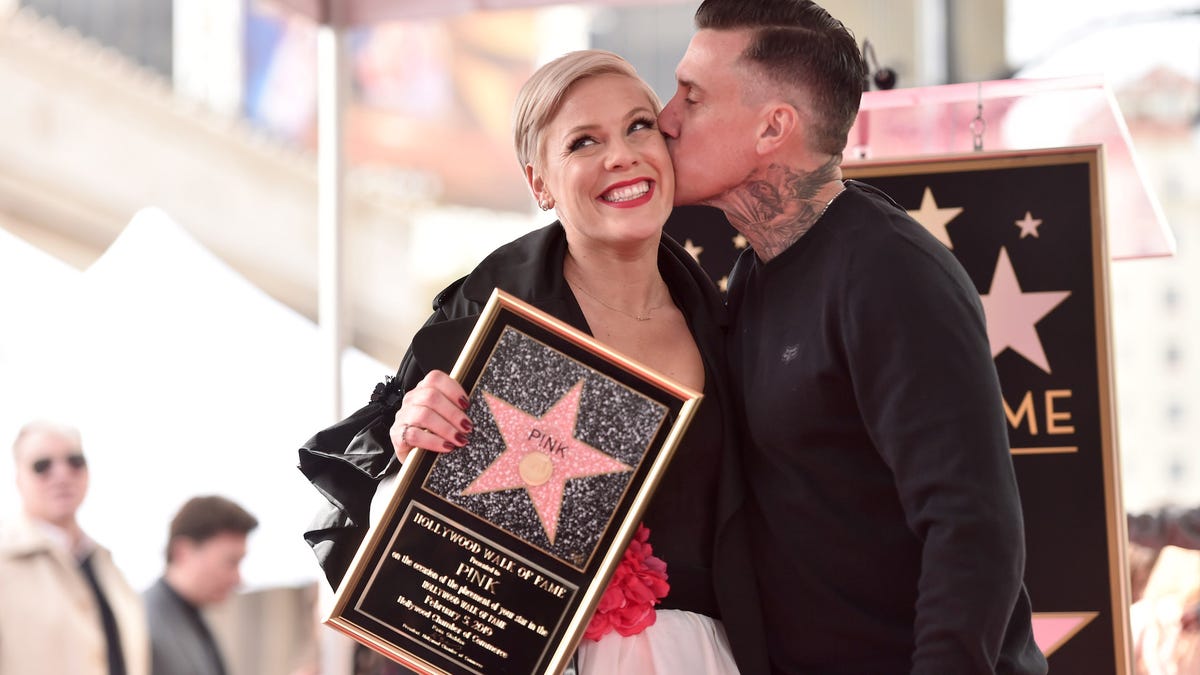
Advertisement – Continue Reading Below
Advertisement – Continue Reading Below
Advertisement – Continue Reading Below
This post was originally published on this site be sure to check out more of their content.


